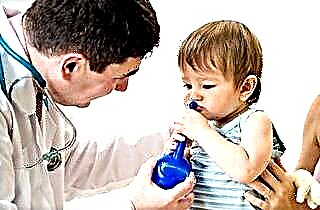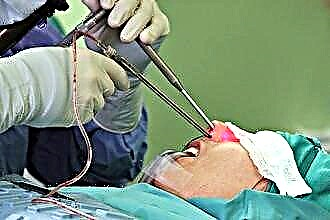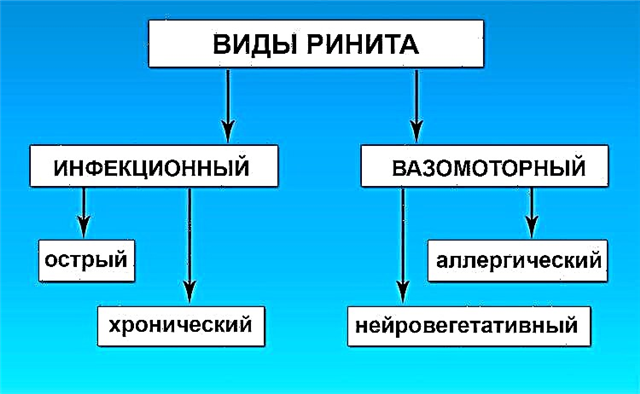Snot in young children flows for various reasons and does not necessarily indicate the onset of the disease. Nasal discharge can be non-infectious, infectious and allergic in nature. In part, you can guess about it by the color and consistency of the snot. The intensity of the color can tell how long ago the disease began, and even at what stage it is. But the yellow snot Komarovsky and many other modern pediatricians consider a sign of recovery, but also not always.
All shades of yellow
 For a good pediatrician, the appearance of snot can tell a lot. Even the intensity of their shade is informative, which inexperienced mothers often do not pay attention to at all. And completely in vain. Komarovsky describes yellow snot in a child, depending on the color, as follows:
For a good pediatrician, the appearance of snot can tell a lot. Even the intensity of their shade is informative, which inexperienced mothers often do not pay attention to at all. And completely in vain. Komarovsky describes yellow snot in a child, depending on the color, as follows:
- Light yellow viscous discharge, which did not appear immediately, but 3-5 days after the onset of a cold, just indicate that the healing process has begun. The child's body independently coped with the bacteria that got into it and they did not manage to multiply in the body. The mucus has fulfilled its protective function and the discharge gradually stops. A yellowish color indicates a changed composition of the mucus.
- Yellow-green snot clearly indicates that pathogenic bacteria are actively multiplying in the body. The immune system cannot cope with them, and the child needs additional treatment. If such snot also has an unpleasant odor, this means that they turn into pus, which, if untreated, can get into the ears and throat, provoking the onset of otitis media and bronchitis.
- Bright yellow or orange snot is a reason to sound the alarm. This is a signal of the subacute / acute stage of sinusitis or frontal sinusitis. Purulent discharge accumulates in the sinuses and causes active inflammation. In this case, even babies have to be treated with antibiotics. Otherwise, very serious complications can occur, up to blood poisoning and inflammation of the meninges.
Unfortunately, yellow snot in babies is often not immediately detectable. They are very thick and due to the fact that babies have narrow nasal passages do not go out on their own. This makes breathing very difficult and creates excellent conditions for the reproduction of pathogenic microflora. Therefore, it is so important to very carefully monitor the well-being of a small child.
Treatment
 When yellow snot appears in a child, Komarovsky recommends starting treatment with a thorough diagnosis. If there is no increase in body temperature, the discharge is not too intense in color and is not very abundant, then you can try to do with proven folk remedies:
When yellow snot appears in a child, Komarovsky recommends starting treatment with a thorough diagnosis. If there is no increase in body temperature, the discharge is not too intense in color and is not very abundant, then you can try to do with proven folk remedies:
- Drip the child's nose with a decoction of chamomile, calendula or celandine. To prepare it, you need to pour a teaspoon of dry grass with a glass of boiling water, boil for 10-15 minutes in a water bath and leave for another 2-3 hours. Dripping 3-5 drops into each nostril 3-4 times a day.
- Older children can bury their noses with onion or garlic juice mixed with honey and olive (sea buckthorn oil) in a 1: 1: 1 ratio. The mixture will tingle a little, but it has excellent bactericidal, antiseptic and anti-inflammatory effects.
- A child of any age will benefit from the use of juice from aloe or Kalanchoe leaves. These plants not only successfully cope with the common cold, but also strengthen the immune system. Enough 2-3 drops in each nostril 2-3 times a day.
- Essential oils help well against yellow rhinitis: eucalyptus, fir, coniferous, chamomile, calendula. They can be spread indoors with an aroma lamp or added to liquid for inhalation.
 Of the pharmacy preparations are best suited for children: "Derinat", "Vibrocil", "Protargol", "Isofra", as well as means for rinsing the nose "Aqualor", "Sanorin", "Aquamaris", "NoSol", "Physiomer" ...
Of the pharmacy preparations are best suited for children: "Derinat", "Vibrocil", "Protargol", "Isofra", as well as means for rinsing the nose "Aqualor", "Sanorin", "Aquamaris", "NoSol", "Physiomer" ...
If the snot is intensely yellow or orange, you will have to use antibiotic nasal medications. Only a doctor should select them, since some of them cause serious side effects in the smallest.
Komarovsky categorically does not recommend treating yellow thick snot in a child with vasoconstrictor drugs. Not only are they ineffective in this case, but they also cause dryness and irritation of the nasal mucosa. It is better to lubricate the inside of the nose with an oil solution of fir or thuja oil (you can make it yourself - 2-3 drops of essential fir oil for a teaspoon of ordinary oil) and then gently clean the nose with a cotton swab.
Correct prevention
 The main preventive measures are to strengthen the immune system and prevent infection of the child with infections transmitted by airborne droplets. Providing your baby with adequate nutrition, regular walks in the fresh air and moderate physical activity - he will grow healthy and strong.
The main preventive measures are to strengthen the immune system and prevent infection of the child with infections transmitted by airborne droplets. Providing your baby with adequate nutrition, regular walks in the fresh air and moderate physical activity - he will grow healthy and strong.
In some regions in winter there is an acute shortage of organic vegetables and fruits (these products bought in supermarkets may contain chemical compounds harmful to the baby). Then the lack of vitamins and minerals will have to be compensated for with high-quality multivitamin preparations.
If you suspect a weakened immune system, it is better to drink immunomodulators prophylactically.
And the most important thing is not to run a runny nose, so that it does not turn into a chronic form. At the initial stage, with proper treatment, it should go away in a maximum of 5-7 days. If this does not happen, or the child's health condition has deteriorated sharply, immediately see a specialist.

 Of the pharmacy preparations are best suited for children: "Derinat", "Vibrocil", "Protargol", "Isofra", as well as means for rinsing the nose "Aqualor", "Sanorin", "Aquamaris", "NoSol", "Physiomer" ...
Of the pharmacy preparations are best suited for children: "Derinat", "Vibrocil", "Protargol", "Isofra", as well as means for rinsing the nose "Aqualor", "Sanorin", "Aquamaris", "NoSol", "Physiomer" ...

